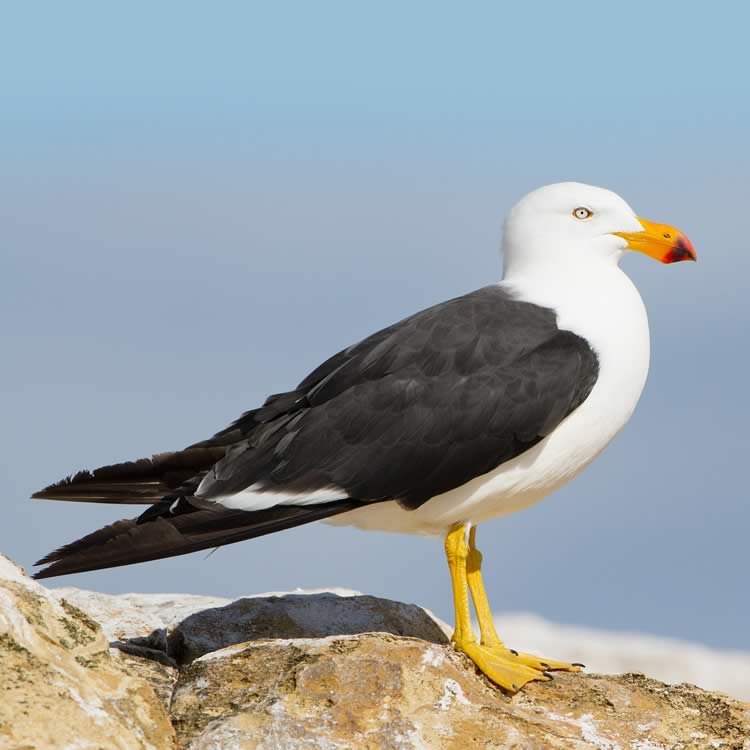Pacific gull

Community type
Pelagic reef organisms, Tidal flats
Habitat type
Rocky reefs, kelp beds and inter-tidal zone, Saltmarsh and tidal flats
The Pacific gull is the largest gull in Tasmania, growing up to 65cm in length. It can be confused with the kelp gull, a similar sized and coloured bird which is more abundant, and often occurs in large flocks on wharves and tip faces around Hobart.
The Pacific gull is distinguishable by its robust yellow beak with a red tip on both the top and bottom beak, and a black stripe on its tail feathers. These gulls look for food along the rocky coastline, beaches and in shallow water. They feed mainly on fish, crabs and molluscs. Pacific gulls are sometimes seen dropping crabs and molluscs onto rocks from the air to open their shells.
Prime breeding sites are on the high points of islands or headlands, scraping holes in the ground or building nests from sticks, grass and seaweed. Females usually lay and hatch 2 or 3 brown eggs, while the male finds food and guards the nest.
